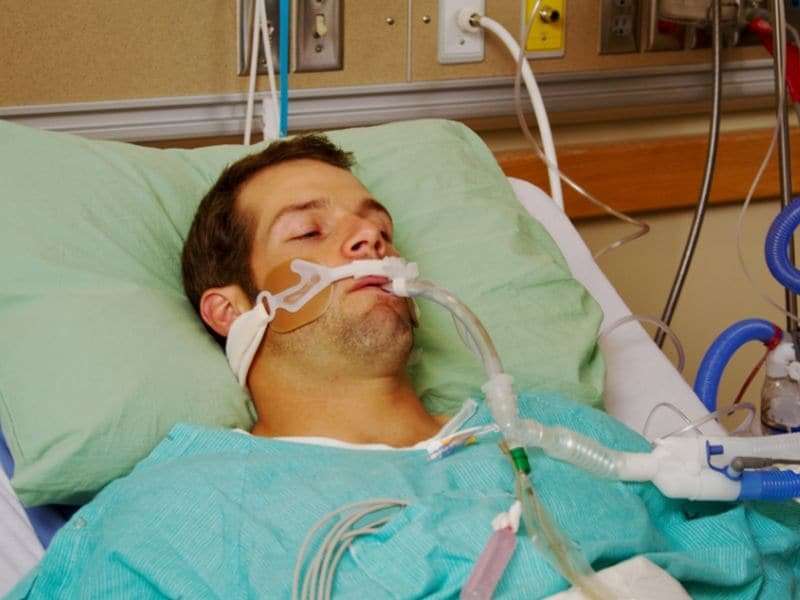Mechanical ventilation may alter diaphragm muscle fibers

(HealthDay)—In critically ill patients, mechanical ventilation with positive end-expiratory pressure (PEEP) results in reduced diaphragm fiber length that may make it more difficult to wean patients from mechanical ventilation, according to a study published in the Aug. 15 issue of the American Journal of Respiratory and Critical Care Medicine.
Johan Lindqvist, Ph.D., from the University of Arizona in Tucson, and colleagues studied the structure and function of diaphragm fibers of mechanically ventilated critically ill patients and mechanically ventilated rats with normal and increased titin compliance.
The researchers found that PEEP caused a caudal movement of the diaphragm, both in critically ill patients and in rats; this caudal movement reduced fiber length. In 18-hour mechanically ventilated rats (PEEP of 2.5 cm H2O), diaphragm fibers adapted to the reduced length by absorbing serially linked sarcomeres, the smallest contractile units in muscle (i.e., longitudinal atrophy). Longitudinal atrophy was reduced by increasing the compliance of titin molecules.
"We postulate that longitudinal atrophy, in concert with the aforementioned cross-sectional atrophy, hampers spontaneous breathing trials in critically ill patients: during these efforts, end-expiratory lung volume is reduced, and the shortened diaphragm fibers are stretched to excessive sarcomere lengths," the authors write.
More information:
Abstract/Full Text (subscription or payment may be required)
Editorial (subscription or payment may be required)
Copyright © 2018 HealthDay. All rights reserved.


















